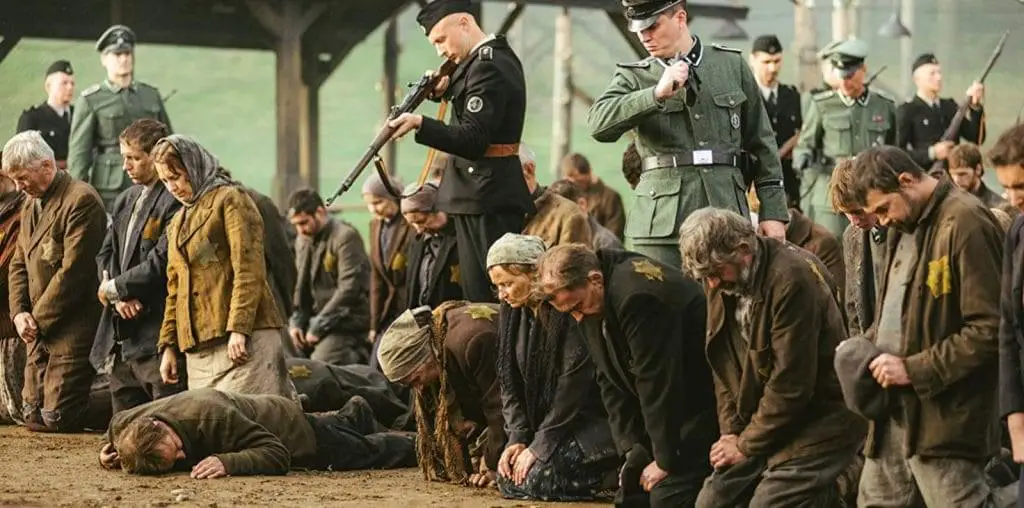
In We Were Soldiers, Mel Gibson’s blood-soaked Vietnam epic, nearly 20 minutes of valuable screen time are devoted to the homefront activities of the soldiers’ wives, waiting fearfully at home in Fort Benning, Georgia while their men engage in battle thousands of miles away. Given that the movie is 140 minutes long, this still leaves a full two hours for the traditional bomb-bursting, napalm-dropping, death-dealing and martyrdom that are war movies’ bread and butter. But according to feminist historian Estelle Freedman, of Stanford University, what’s truly earth-skahing about the film is the very existence of those scenes focusing on the stories of women.
“What it says is that, in Hollywood films, even war movies have come to recognize that there is a women’s audience,” says Freedman, co-founder of Stanford’s Program in Feminist Studies, and the author of the illuminating new book No Turning Back: The History of Feminism and the Future of Women (Ballantine, $26.00). Women, Freedman says—as major consumers of culture—are now insisting that their stories be told. And Hollywood, it seems, is listening-even if the women in such films do little more than cry, exchange laundry tips, and say things like, “Get out your best dresses, girls. The men are gonna want to party!”
“If nothing else, it’s a corrective to the view that women who married and had children in that era were isolated and lonely and miserable,” she says. “Wherever they could, women created communities for themselves, though its true that not all women were able to.”
We Were Soldiers takes place in 1964 and ’65, and follows the first-ever battlefield engagements of U.S. soldiers in Vietnam, when innocence and patriotism had yet to be replaced with the disillusioned manic-depression that most often characterizes films about Vietnam. Historically, it was a time when, as Freedman puts it, “The image of the world-war II generation, a belief in the heroism of war, is still
strong. War and sacrifice have not been tainted yet with the discontent that’s going to come in the late sixties and early seventies.” So the film’s the depiction of Tupperware wives, waiting at home for telegrams from the War Department, is accurate.
“The changes,” says Freedman, “would come along a little bit later than that.” In addition to the Homefront wives, the film offers other hints at the stories of women with its fleeting glimpses of army nurses tending the wounded, of female war correspondents arriving post- battle to snap pictures of the carnage.
“Those intrepid women photo-journalists, plus the nurses and the wives left at home, all had an important role to play in Vietnam,” Freedman says. “The other women I’m thinking of were the bar girls, the Vietnamese prostitutes who serviced the soldiers in Vietnam.”
Unfortunately-or perhaps not-the presence of Bar Girls is not so much as hinted-at in the morally pure We Were Soldiers. “Of course, at the time of this film, there wasn’t enough of an American military culture yet in country,” Freedman admits, “but there certainly had been the French military presence earlier, and there was an established sexual service industry in some cities by the time the Americans got involved. That’s another important women’s story from the Vietnam era.”
Then there were the women in the antiwar movement, on college campuses at home-who presumable would have had a lot to say to the faithful wives of We Were Soldiers. According to Freedman, the revival of feminism-you thought it started in the sixties?-was largely sparked by rising discontent within the numerous Vietnam era, anti-establishment movements.
“Early on, women were mainly providing support-services in the antiwar movement, as they were in the civil rights movement,” she says. “Which meant making the coffee, running the mimeograph machine, providing all those creature comforts, then stepping back as the men played the leadership roles. The whole experience of questioning these governmental forms of authority, opened us up to questioning other forms of inherited wisdom, including the notion of male authority.”
Even so, what Freedman calls the “radicalization of women” did not occur till late in the Sixites. Freedman recalls one seldom-mentioned anti-draft effort, in which young women were recruited to go out and offer draftable men a good, anti-establishment roll-in-the-hay, more-or-less in exchange for the young men’s resistance to being drafted.
“It’s true. There were buttons that said, ‘Girls say Yes to boys who say No,'” Freedman reports. “Joan Bæz was once featured on a poster with that slogan. The idea being that—in the counterculture, not the mainstream culture—women couldn’t burn their draft cards, but they could say, ‘We’ll go to bed with those brave boys who resist the draft.'”
Talk about Bar Girls.
“I actually have one of those buttons,” she laughs. “I told this story in one of my classes, and somebody brought me the button a few days later. This is exactly the kind of thing that gave birth to modern feminism. When women started moving out of those movements, it was partly in reaction to being stuck in that sexually-objectified, exclusively supportive role.”
That We Were Soldiers shows women who never question their role as supporters of husbands, makes it no less important a film, suggests Freedman. “It’s 1965,” she says. “It’s still a little early for the wives of soldiers to be doing that kind of questioning. But in a few years, these women will be asking a lot of questions.”
____________________________________________________________
Writer David Templeton takes interesting people to the movies in his ongoing quest for the ultimate post-film conversation. This is not a review; rather, it’s a freewheeling, tangential discussion of art, alternative ideas, and popular culture.
Check out FILMTHREAT.com’s FEATURE ARCHIVES and read more insightful stories, expert analysis, gut-busting satire and caustic commentary!

